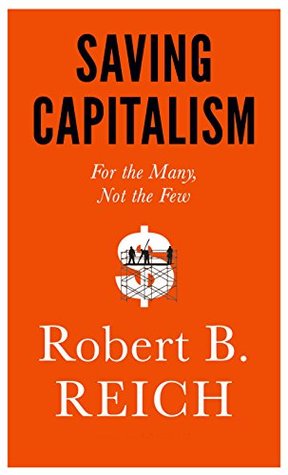More on this book
Community
Kindle Notes & Highlights
Read between
February 14 - March 4, 2019
For three decades after World War II, America created the largest middle class the world had ever seen.
The threat to capitalism is no longer communism or fascism but a steady undermining of the trust modern societies need for growth and stability.
Put simply, globalization and technological change have made most of us less competitive. The tasks we used to do can now be done more cheaply by lower-paid workers abroad or by computer-driven machines.
It’s useful to view the
Those at the bottom are the first to be fired, last to be hired, and most likely to bear the brunt of declining wages and benefits.
What are called “public schools” in many of America’s wealthy communities aren’t really public at all. In effect, they’re private schools, whose tuition is hidden away in the purchase price of upscale homes there, and in the corresponding property taxes.
To state it another way, no one should confuse income for virtue, net worth for worthiness. The underlying reality is that capitalism is not working as it should or as it can. The mythology that one is paid what one is worth must be seen for what it is.
The richest four hundred Americans have more wealth than the bottom 50 percent of Americans put together; the wealthiest 1 percent own 42 percent of the nation’s private assets; and the share of wealth held by the lower half of households has fallen from 3 percent in 1989 to 1 percent today.
Patagonia, a large apparel manufacturer based in Ventura, California, for example, has organized itself as a so-called benefit corporation—a for-profit company whose articles of incorporation require it to take into account the interests of workers, the community, and the environment, as well as shareholders.
In their 2004 book, The New Division of Labor, economists Frank Levy and Richard Murnane used driving a truck as an example of the sort of task computers would never be able to perform because it requires complex pattern recognition.


